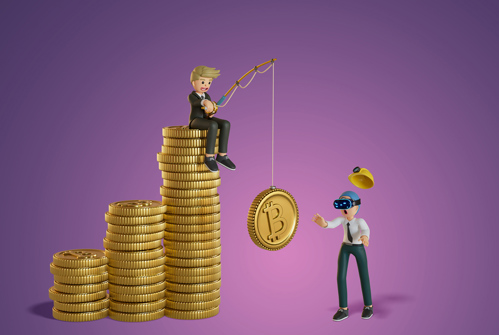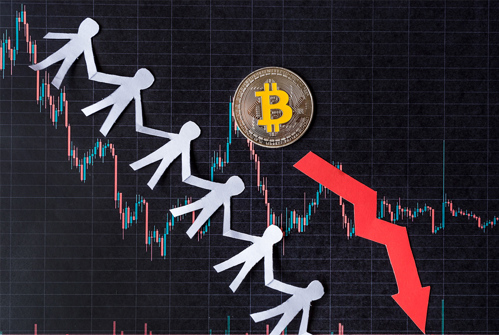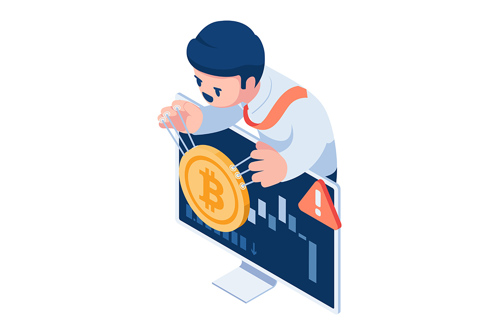7 Signs of FTX Scam
Just 2 months ago FTX seemed like the crypto exchange platform of the future while FTX founder Sam Bankman-Fried was lauded as a billionaire genius that was going to make the world better. All it took was an article piece from their competitor Coinbase, and the whole thing fell apart like a rackety house of cards. The FTX scam was exposed for what it was and SBF got arrested on the 12th of December 2022. However, It’s easy to see that the emperor is naked, once the jig is up.
Many people declare how red flags had been obvious all along and that investors should have known better. This line of thinking is unproductive and it distracts from the core problem. Like with many scam cases you can’t simply put the blame on the gullibility of victims.
Though SBF was doing his best to establish an image of a well-intended CEO that has made several missteps, it is important to understand that the FTX scam performed all the tricks in the crypto scam manual to deceive people. What’s more, the charges brought against him show criminal intent against his investors. This article will present some of the fraudulent tactics which extorted billions from crypto investors.

Pageantry and Shameless Self-promotion of FTX Scam
Most scams, especially Ponzi schemes, employ a special line of advertising. They use glitzy and dazzling videos of how successful and rich the fraudulent promoters are. This is done to make their targets believe that if they invest in the scheme, they will become equally rich. The scam is always a life-changing new platform that will revolutionize the world. Additionally, the promoters are shown as charismatic, energetic, and unorthodox thinkers.
Does this ring a bell? The FTX founder Sam Bankman-Fried invested a lot in building his public persona. He gave hefty sums of money to large media outlets, which naturally incentivized them to publish positive articles about him. He was dubbed the “most generous” billionaire and there was a sleuth of content which depicted him as a financial rising star that would change the world with his line of effective altruism.
All of this was a typical shameless Ponzi-promoter self-aggrandizing, but it’s just that SBF had much more money to buy ad time and space on prominent platforms.
Shills to FTX Scheme
Many scams pay influencers and bots to promote their money-grabbing schemes. FTX group did the very same thing but with style. The FTX scam had coffers big enough to hire big-name celebrities to endorse their company. Nevertheless, some say the targets should have known not to listen to the financial advice of sports players or Hollywood stars. This would be a salient point if the FTX promotional reach had ended there.
SBF hired YouTube influencers with large traffic and audience to actively promote their CEX. These YouTubers had large channels dedicated to crypto trading, news of crypto markets, and general financial affairs. When these internet personas advertised FTX, their audience was inclined to believe them. This promotion gave the whole thing additional legitimacy. These influencers greedily received hefty sums to promote the FTX scam without verifying the CEX and this way they inadvertently served as shills. Still, the SBF’s influence doesn’t stop there.
For whatever reasons, prominent entrepreneurs like Kevin O’Leary and Bill Ackman fully supported the FTX scam, and they continuously praised Sam Bankman-Fried. People believed them and as a result, they invested in the highly problematic company.
Con artists require the services of shills, people who participate in social engineering willingly or otherwise, by praising or advertising the scam in order to dupe people to provide their money. The FTX group utilized such services. Since SBF already had vast fortunes they could hire famous and influential media stars and influencers which in turn attracted a huge number of crypto investors.
Presenting the False Value of the FTX Fraud
To explain how SBF pulled this one off, we need to introduce the FTT tokens. Many crypto exchange platforms offer their trademark tokens that serve as utility tokens. They provide several benefits to their owners mainly to incentivize them to use the appropriate trading platform. By holding these tokens, people may get discounts in trading, decision-making privileges, and even annual percentage yield.
FTT was one such token, which was easily made on the Ethereum chain. We should note that these types of tokens are extremely easy to produce. Countless scams have created worthless coins quickly and sold them for unrealistic prices, promoting them as the next Bitcoin. People get struck by FOMO and greed and get duped into buying them. Ultimately they lose money and end up owning worthless tokens, known as “sh*tcoins” in crypto slang.
Broadly speaking this ended up being the situation for FTT holders, even though the FTX scam wasn’t a pump-and-dump scheme. Unfortunately, the problem with FTT tokens doesn’t lie there. Out of all FTT units only a small portion was circulating on the crypto market, while Alameda and the FTX exchange scam held the considerable majority of these tokens. The two companies were artificially pumping the value of their crypto assets, and in turn, they used it as collateral for taking out loans, liquidity pull, and overall presentation of the company’s wealth when presenting FTX to crypto investors, legislators, and potential partners.
In a nutshell, FTX and Alameda created their own virtual money for which they were artificially dictating its price. These were the machinations of scammers behind OneCoin, DagCoin, LoveCoin… Well, basically most crypto scam Ponzi schemes function this way. The bottom line is that the FTX scam used the unrealistic market value of their tokens, and treated them as liquid funds they could easily access. In reality, this was far from the truth.
Furthermore, the FTX group exploited this gross misrepresentation of funds to broker deals, trades, and loans which these tokens couldn’t back up. When this gossamer financial bubble came to light, it burst immediately, leaving many creditors in financial trouble as they can’t receive their money back. At the end of the day, the FTT token had the same function as fraudulent sh*t coins – It presented false value to attract unsuspecting crypto investors.

Trading against Their Own Customers
As mentioned in the previous section, Alameda and FTX were trading with each other regularly. This way they were able to manipulate and take advantage of the price of the various listings on FTX. An example of this would be that Alameda could obtain tokens and coins before they would get introduced to the crypto market.
Generally, when a coin gets launched into open trade it gets a temporary price bump by the very fact it got available. As a result, Alameda could acquire the tokens for a lower value. Once these crypto assets enter circulation, they could trade with them with the added price bump. This kind of practice is a typical example of insider trading, but regardless of how you classify it, it’s a dishonest and illegal practice.
Customers’ Crypto Wasn’t Exclusive to their Accounts
As of December 2022, more than a month after the initial unmasking of the entire fraud, the investigators are still trying to make out the heads or tails of the entire scheme. The whole case is extremely convoluted due to the lack of proper bookkeeping, deliberate obfuscation of money trails, and frivolous mishandling of clients’ assets.
Be this as it may, the fact that three separate American agencies brought charges Against SBF is telling. These governmental bodies are Commodity Futures Trading Commission, Securities and Exchange Commission and most importantly the Department of Justice.
These agencies have raised cases partly on the basis that FTX and Alameda hadn’t treated the assets of their clients right. Mainly that they didn’t hold the customers’ crypto safely in their designated wallets. More likely they were accumulating them in a joint account from where the FTX scam could abuse these funds liberally. This leads us to our next point.
Embezzling Customers’ Funds
Plain and simple, FTX fraud stole their clients’ crypto. SBF is working hard on obfuscating his financial crime by controlling the narrative of an unfortunate mistake and he’s trying to find a legal loophole. With all that effort, everyone is asking the big question – What has happened with the customers’ billions in crypto?
There are still no definitive answers, but in the early assessment of the scandal, it has become obvious that the FTX scam used the infamous “back door” in their trading systems that allowed them to send clients’ money to Alameda. They in turn used it to make trades, which eventually didn’t yield returns, and thus they made huge losses. In a sense, Alameda was gambling with the money of FTX customers.
There are some who point out that these trades fell apart because of the bear market of 2022, and that otherwise Alameda and FTX would have stayed afloat. This is besides the point as the embezzlement they were committing, would still be criminal in any market. It’s just that during the bull market the fraud would be working better. However, there is recent evidence that the FTX exchange scam was smuggling clients’ crypto in 2021 as well, and that Alameda lost billions in unsuccessful trade. Luckily for them, with the bullish crypto market and the influx of cash and investors, they managed to cover up all the FTX lost cryptocurrencies.
Friends with Special Benefits
It is a common practice for crypto asset service providers to impose certain limitations. These function as safety measures that would prevent the client from trading amounts they cannot back up, or in other cases they can’t take out loans or leverage without collateral. Being in such a tight relationship, the FTX exchange scam gave Alameda complete freedom to trade however they wanted and they lifted all the safety measures that would constrict any problematic speculations. As a result, Alameda ended up trading with the assets of FTX customers with considerably higher risk and without a safety brake.

The Blame Game
With all the media outrage that FTX fraud has created, it’s easy to find a plethora of articles that point to egregious mishandling of funds, illegal activities, nepotism, inexperienced and unskilled management, and overall horrible business practices. Now everyone is shocked and appalled. However, the question arises: If FTX was such a problematic business why didn’t anyone intervene?
The fact that the FTX exchange scam was able to run rampant as long as it did is an oversight by the official financial and regulatory bodies. The cornerstone of proper banking is the Know Your Customer (KYC) standard and anti-money laundering and terror financing acts. These instruct banks to verify to which institutions their funds flow. Nobody checked FTX and Alameda for a long time, and the relevant financial institutions were obligated to.
Though there are individuals who had raised their concerns, the majority of banks didn’t perform their duty and check the standing and financial dealings of FTX and Alameda. The FTX scam may have abused billions of dollars, but it didn’t happen in a vacuum. Many banks, crypto exchanges, and state institutions are responsible for allowing such a huge-scale fiasco.
There are people who point out that FTX fraud was giving hefty donations far and wide – to the media outlets and political parties, in other words, the powers that be. Additionally, they were moving enormous amounts of money which were highly profitable for the intermediary institutions. All of this implies that many entities who could have scrutinized FTX simply didn’t, mainly because they had the economic incentive not to.
Like with many scams, FTX was regulated by an island country – the Bahamas. Before the collapse, they were trying to spread across Europe with the CIF – Cyprus Investment Firm license. This is also a popular regulatory body for schemes, as Cyprus Securities Exchange Commission is one of the most lenient license providers for the European region.
How to Get Your Money Back
Since FTX group filed for bankruptcy, you can hope that the bankruptcy court will assign you your funds back. Additionally, you can join a class action lawsuit, while you may have more or less limited options depending on your area of residence. While the official law enforcement bodies might be working to provide you with FTX lost cryptocurrencies, the system is robust and slow. That is if the system delivers at all. Just because your money might be locked behind the red tape, that doesn’t make your right for compensation loss any smaller.
We at Funds Recovery present a more effective way to get your rightful money back. Institutions that enabled you to do your business with FTX fraud have failed you. These financial institutions have not performed an array of legal requirements, that they are obligated to practice. They have a fiduciary duty to you as their client, and because of this, you have the right to reimbursement.
The Funds Recovery team consists of legal and financial experts who are ready to fight for your case and recover your stolen money. Just because you were robbed by an influential rich magnate, doesn’t make your right for reimbursement any less significant. Let us help you so contact our case coordinators now.
